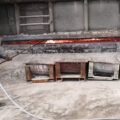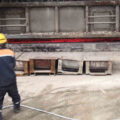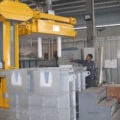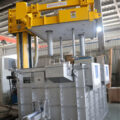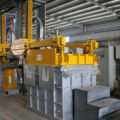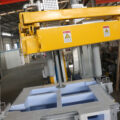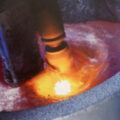Aluminum foundries have long recognized the need for effective flux gas treatment to remove hydrogen and inclusions. In order to meet these requirements of foundries, AdTech designed and manufactured on-line rotary degassing machines to meet the requirements of inert gas or active gas degassing in refineries and foundries. The development of rotary degassing technology has brought major breakthroughs in automated, efficient, and cost-effective degassing. The principle of these rotary degassing machines requires the rotor to be able to generate very small inert gas bubbles, which are evenly and uniformly distributed throughout the molten metal pool.
Rotary Degassing Technology
Rotary degassing technology removes these undesirable components by bubbling a gas, usually nitrogen, through molten metal. The gas is usually introduced through a degassing rotor, which reduces the size of the bubbles and disperses the nitrogen gas throughout the molten metal bath. As the generated bubbles rise through the molten metal mass, they absorb the hydrogen dissolved in the metal and remove it from the melt. In addition, non-metallic solid particles are swept to the surface by the flotation effect of bubbles, and then can be removed by skimming the metal.
The bubbles of the inert gas are smaller and the residence time in the molten metal is longer. This ensures a large surface contact area between the inert gas bubbles and the molten metal, thus ensuring a higher mass transfer coefficient relative to the diffusion layer.
The distribution range of inert bubbles on the entire cross-section of the molten metal has been very wide.
The full motion of the molten material accelerates the transfer of hydrogen to the inert bubbles.
Oxide and other non-metallic inclusions are mainly removed by flotation, because small inert bubbles will attach themselves to the oxide and then float to the surface of the bath. The principles that apply to hydrogen removal also apply to oxide removal.


